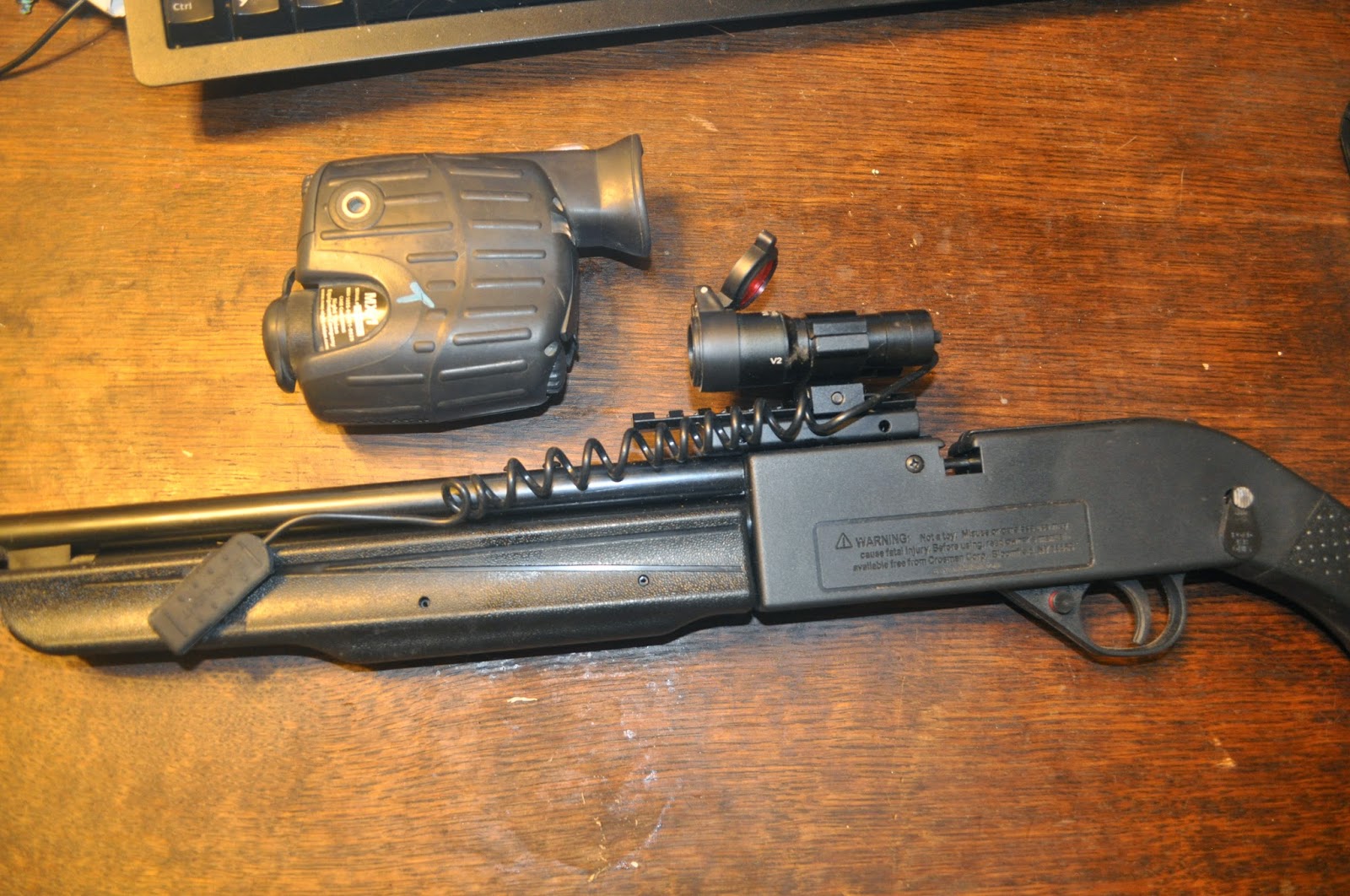What I use it for is quickly locating animals that are out after dark, or even in daylight; they stand out clearly from the (usually) cooler background, and it makes finding the cow after dark much easier - you can spot a cow-sized animal from hundreds of yards away, even through vegetation, and it's made it possible for me to watch a lot of wildlife that is otherwise hard to follow -- coyotes after dark, for instance.
 |
| My rat killing setup |
Walking around the farm after dark, the thermal ocular is showing me I have a large population of norway rats. They're grey with white bellies, and they get pretty big. They think that they invisible after dark, and it's possible to walk right up on them, and that's where the BB gun comes in. I dont' want to use poison for fear of one of my dogs eating a poisoned rat, and I don't want to use lead-based ammunition out of the same concern.
I wanted to be able to kill the rats with the least-cost possible as far as ammunition, and the smallest chance of over-penetration -- which is the complicated way of saying I don't want the ammunition to go very far past what I'm shooting.
So the selection was for a pump-action BB gun that shoots steel BBs. Each BB cost about a third of a cent ($0.003) and being steel, there's less issue with it being ingested by the animals than with a lead-based shot. The cows have magnets that will collect them if th ey eat them, and they'll just pass right through pigs.
The next problem was that in the low-light situations I couldn't see the sights to be able to aim the gun. the solution was to purchase a cheap laser-flashlight combo (you see it mounted on top of the rifle) that comes with two pressure switches. You velcro the switches where your hands are when you aim the rifle, and you can swith on or off the flashlight or laser. 20 minutes sighting the laser in (I chose to sight it at 30' because that's the longest shot I would make, and the BBs from a smooth barrel aren't all that accurate) and I have my basic rat killing setup.
 |
| laser/flashlight combo packaging. |
the laser/flashlight combo was $27; the bb rifle was about $60. So the entire gun setup purchased new totaled $95. 6,000 BBs cost $20.
The basic technique is pretty simple: Pump up the rifle and load a BB, and then using the thermal site walk to within about 10' of the rat. Put the ocular in a coat pocket, aim the rifle, flip on the laser site red dot, aim the rifle where the rat is, and then flip the flashlight on The rat will usually freeze when hit with the light - zap! - bb hits rat, off the light goes, pump the gun up, and look for the next rat to kill.
The first night I killed 9 rats, the second 12 rats, the third 8, and then I've killed 5 to 10 rats each night since then. They started hiding in their holes, but they usually sit with their heads sticking out about an inch so that they can see what's going on, and that's plenty for me. The thermal site shows me which holes have rats - flash, zap! dead rat in hole . I can count the number of rats with the thermal site (I can see them for hundreds of feet as bright white blobs) and I have about 200 or so that live in or around the barns. The thermal site also makes it easy to hunt them in the rafters and along the beams of the barns. They'll usually just freeze up there, spotlight, shoot, rat falls, move on.
I'd sure love to be able to own a thermal rifle site for this. In my dreams I'd put it on a semi-auto pellet gun sighted for 50', and since I wouldn't have to show any light at all, I could probably shoot 5 or 10 rats at a time without them h aving any clue I was there - but I can't justify the $3 to $5k for the site. But they sure are cool.

















































